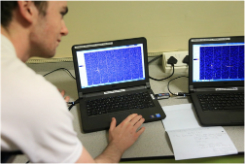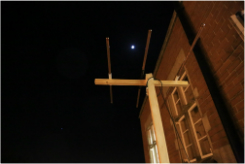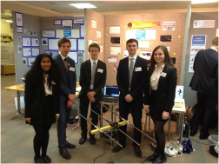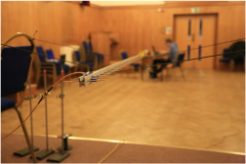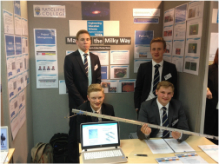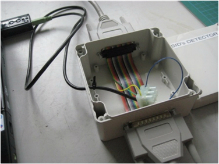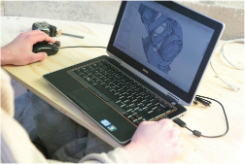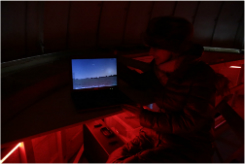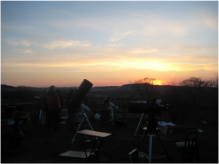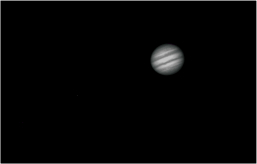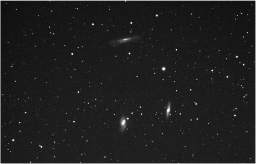As licensed radio hams (2E0JXL & 2E0JXV), active members of the BAA Radio Astronomy Group (BAARAG) and former president and secretary of Nottingham Astronomical Society, we have led some fascinating projects from the restoration and automation of Nottingham’s observatory & 24” telescope, automation & remote operation of our own astro-imaging equipment and the construction & commissioning of antennae for radio astronomy projects in colleges and universities. Currently we are in the final stages of our own observatory build, which we aim to complete in May 2016. We have also just commissioned a video meteor monitoring system.
Radio Meteor Detection
Our annual college projects are part of the Engineering Development Trust (EDT), Engineering Education Scheme, supported by Loughborough University's Physics Department. Recent projects have included the radio detection of meteors illuminated by the GRAVES radar station (143.050 MHz) – “Establishing a College Radio Meteor Observing Station” and the building, testing and optimisation of an H-Line antenna - “Building a 1420 MHz Quad Yagi-Uda Antenna to Map the Milkyway”. These projects were inspired by BBC Sky at Night articles by Paul Hyde “How to use Radio Signals to catch Meteors” and by a series of articles from Peter East Y1PWE.
In sharing data with other radio observing stations, we realised that data quality in Radio Meteor community was relatively poor as detections included moon bounce, interference, aircraft, satellites and lightning, in addition to meteors. This is evident on the RMOB site for example. Following discussions with Christian Staeyert of RMOB and inspired by Andy Smith G7IZU, Victoria has written an open source application called Scatterthon available on GitHub, which is designed for rapid cleansing and classification of data into meteor and non-meteor phenomena. At the time of writing (April 2016) this is under test by several meteor observers.
Some of our material is available on Ian William’s Radio-Space Forum (Practical Radio Astronomy for Science & Engineering Students and Practical Meteor Observing: Scatterthon - Software Development).
Video Meteor Detection
Our interest in video observation of Meteors was inspired by a 2015 paper presented at Northampton Natural History Museum by Richard Fleet, who had achieved a level of correlation between his own radio and video meteor detections.
In order to take this work forward we are currently working with Paul Hyde to establish cross correlation between radio detections from several stations, in much the same way video observational data is currently validated. We will then begin comparing radio data from, the network more confidently with video data.
To that end we recently commissioned a Watec 902 H3 Supreme and Tamron 3-8mm f1 lens enclosed in a sewerage-pipe housing, mounted in a rural location with good views in all directions. William Stewart has been helpful in ensuring that we are suitably prepared and following discussion with Richard Kacerek, we have also made use of some very helpful UKMON guides: “Setting up and running a meteor station”, “UFO Capture Recommended Settings” and “UFO Analyzer User Guide”. We are also considering a camera dedicated to spectral analysis.

